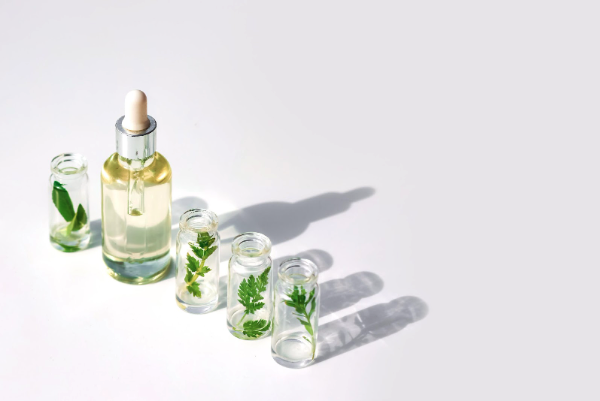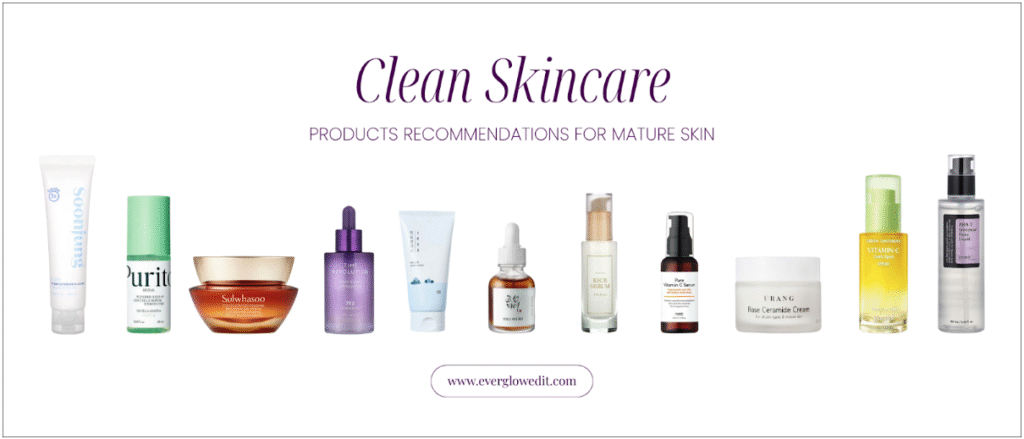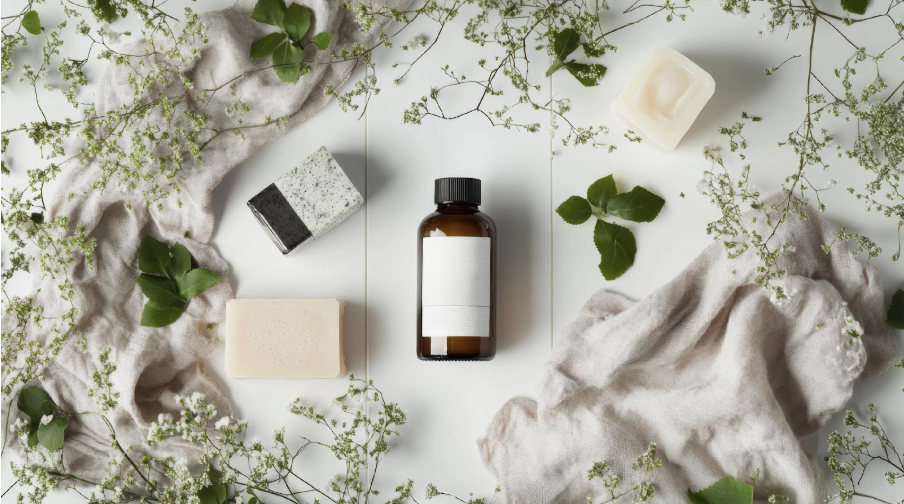Every time I walk down a skincare aisle, or even scroll through an online store, I’m hit with the same buzzwords: clean, natural, non-toxic, green.
They sound reassuring, but do they actually mean anything?
I used to think that grabbing the “natural” option automatically meant safer and better. But once I started digging deeper, I realized these labels can be more confusing than helpful.
That’s why I want to break this down with you.
If you’ve ever picked up a serum or cream and wondered whether “clean” or “natural” really makes a difference, you’re not alone. I’ve been there too.
The good news? You don’t need a chemistry degree to understand your labels. With the right knowledge, you’ll feel confident knowing exactly what’s worth your investment, and what’s just clever marketing.

What Does “Clean” Skincare Really Mean?
The first time I saw “clean” stamped across a moisturizer, I felt instantly reassured—who doesn’t want clean skincare, right? But here’s the catch: there’s actually no official definition of what “clean” means in beauty. Each brand decides for itself. Some avoid parabens and sulfates, others skip silicones or synthetic fragrance, and a few throw every “scary” ingredient on their blacklist just to stand out.
What “clean” usually signals is that a product leaves out certain controversial or potentially irritating ingredients. But that doesn’t automatically make it safer, gentler, or more effective. For me, it’s less about whether a product calls itself “clean” and more about how transparent the brand is with its formulas. Do they share why they exclude certain ingredients? Do they back it up with testing?
So when you see “clean,” don’t assume it’s a guarantee. Think of it as a starting point—then look deeper to see if the product really aligns with your skin’s needs.
The Truth About “Natural” Labels
I used to believe that if something was labeled “natural,” it had to be the better choice. After all, who wouldn’t want ingredients straight from nature on their skin? But here’s the truth: although “natural” seems comfortable, it is not a regulated terminology. A product can claim it’s natural even if only a tiny percentage of the formula comes from plant or mineral sources.
And while natural ingredients can be wonderful, think green tea, ginseng, or rice water, they’re not automatically safer or more effective. Poison ivy is natural too, and I don’t think any of us wants that in a face cream!
The real magic happens when brands know how to stabilize and formulate those natural extracts so they actually work for your skin.
Here’s a quick cheat sheet I use when looking at “natural” labels:
| Natural Label Claim | What It Really Means | What to Watch Out For |
| “100% Natural” | Formula uses only plant/mineral sources | Can expire quickly, less stable |
| “Naturally Derived” | Ingredient started natural, then processed | Effectiveness depends on formulation |
| “With Natural Ingredients” | May only contain a small amount | Marketing spin, not the full story |
Bottom line: don’t stop at “natural.” Always check the ingredient list and how the formula is designed to perform.
Science + Tradition: The Best of Both Worlds
One of the things I love most about skincare is how it connects generations. Growing up, I watched women in my family rinse their hair with rice water, sip green tea for glowing skin, and add pearl powder in their night cream as if it were second nature. These traditional practices weren’t about trends; they were about consistency, balance, and respect for nature’s gifts.
Fast forward to today, and dermatology has caught up with what our ancestors already knew. Green tea isn’t just a soothing ritual; it’s packed with antioxidants proven to protect against free radical damage.
Rice water contains amino acids and vitamins that strengthen skin.
Pearl powder? It brightens and supports firmness.
Modern science doesn’t replace these traditions; it refines them, stabilizes them, and ensures they deliver results every single time you apply them.
That’s why I believe the smartest skincare isn’t about choosing between “clean,” “natural,” or “scientific.” It’s about embracing both worlds—the wisdom passed down through generations and the evidence-backed innovations that help us age gracefully and confidently. When those two come together, skincare stops being complicated and starts being powerful.

What to Look for Beyond the Buzzwords
I’ve learned that the real power of a product isn’t in the marketing—it’s in the ingredient list. Instead of getting stuck on whether something is “clean” or “natural,” I focus on what’s actually inside and how it’s formulated. This is where your money and your skin’s long-term health really count.
Here’s a quick guide I use to decode skincare labels:
| What to Check | Why It Matters | Quick Tip for Decoding |
| Active Ingredients (niacinamide, peptides, vitamin C, retinol) | These are the true workhorses behind results like brightening, firming, and anti-aging | Look for them in the top half of the ingredient list—placement = concentration |
| Ingredient Order | Labels list ingredients by concentration (highest to lowest) | If the star ingredient is at the bottom, it may not be in a meaningful amount |
| Concentration | The strength determines how effective the formula will be | Serums often list % (e.g., 10% niacinamide); creams/toners may not disclose |
| Preservatives & Stabilizers | Keep products safe and effective over time | Don’t fear words like “phenoxyethanol”; they’re there for stability |
| Certifications (EWG Verified, dermatologist-tested, cruelty-free) | Adds transparency and consumer trust | Helpful, but don’t rely only on stamps; still check ingredients |
| Brand Transparency | Honest brands share why they use or exclude certain ingredients | Explore their website for sourcing, testing, and clinical results |
By learning to decode labels, you’ll cut through marketing noise and focus on what truly matters: results, safety, and long-term skin health.
What Not to Do When Reading Skincare Labels
It’s not just about what to look for; it’s also about what not to fall for. Skincare labels are full of traps, and avoiding them will save you both money and frustration. Here’s a cheat sheet of common mistakes and red flags:
| What Not to Do | Why It’s a Problem | Better Approach |
| Don’t judge a product by its buzzwords | Terms like “clean,” “green,” and “natural” aren’t regulated | Read beyond marketing; focus on ingredients and brand transparency |
| Don’t assume long names are harmful | “Niacinamide” or “tocopherol” (Vitamin E) may look scary but are skin-friendly | Research unknown names before dismissing them |
| Don’t ignore fragrance/perfume | Added fragrance can irritate, especially for sensitive or mature skin | Look for “fragrance-free” or natural low-risk alternatives |
| Don’t focus only on the “free from” list | A label shouting “no parabens” doesn’t prove it’s effective | Check for active ingredients that target your needs |
| Don’t equate price with quality | Luxury packaging doesn’t guarantee better results | Judge by formulation, concentration, and how your skin responds |
| Don’t skip patch testing | Even “clean” products can trigger reactions | Test before applying fully, especially with new actives |
By spotting these red flags, you’ll feel more confident and less overwhelmed when choosing products that actually work for you.
FAQs & Common Misconceptions
Myth: Clean and natural are the same thing.
Not quite. “Clean” usually means a product avoids certain synthetic ingredients, while “natural” refers to plant or mineral-based sources. A product can be clean, natural, both, or neither.
Myth: Natural always means gentle.
Some natural ingredients can be harsh or unstable. Gentle depends on formulation, not just the source.
FAQ: Are clean or natural products better for aging skin?
Not automatically. The real results come from proven actives—think peptides, vitamin C, or retinol—regardless of the label.
FAQ: What if I don’t recognize an ingredient on the label?
Do a quick check. Many scientific names may sound intimidating, but they are actually simply vitamins, hydrants, or stabilizers. When in doubt, look it up; knowledge is power.

At the end of the day, “clean” and “natural” are just labels, and while they can be helpful, they’re not the whole story. What truly matters is how a product is formulated, the actives it contains, and whether it supports your skin’s long-term health.
You don’t have to choose between tradition and science. The most powerful skincare comes from blending both time-honored wisdom with modern research. That’s how we age gracefully, with confidence, and on our own terms. And that’s how skincare becomes more than a routine; it becomes empowerment.
